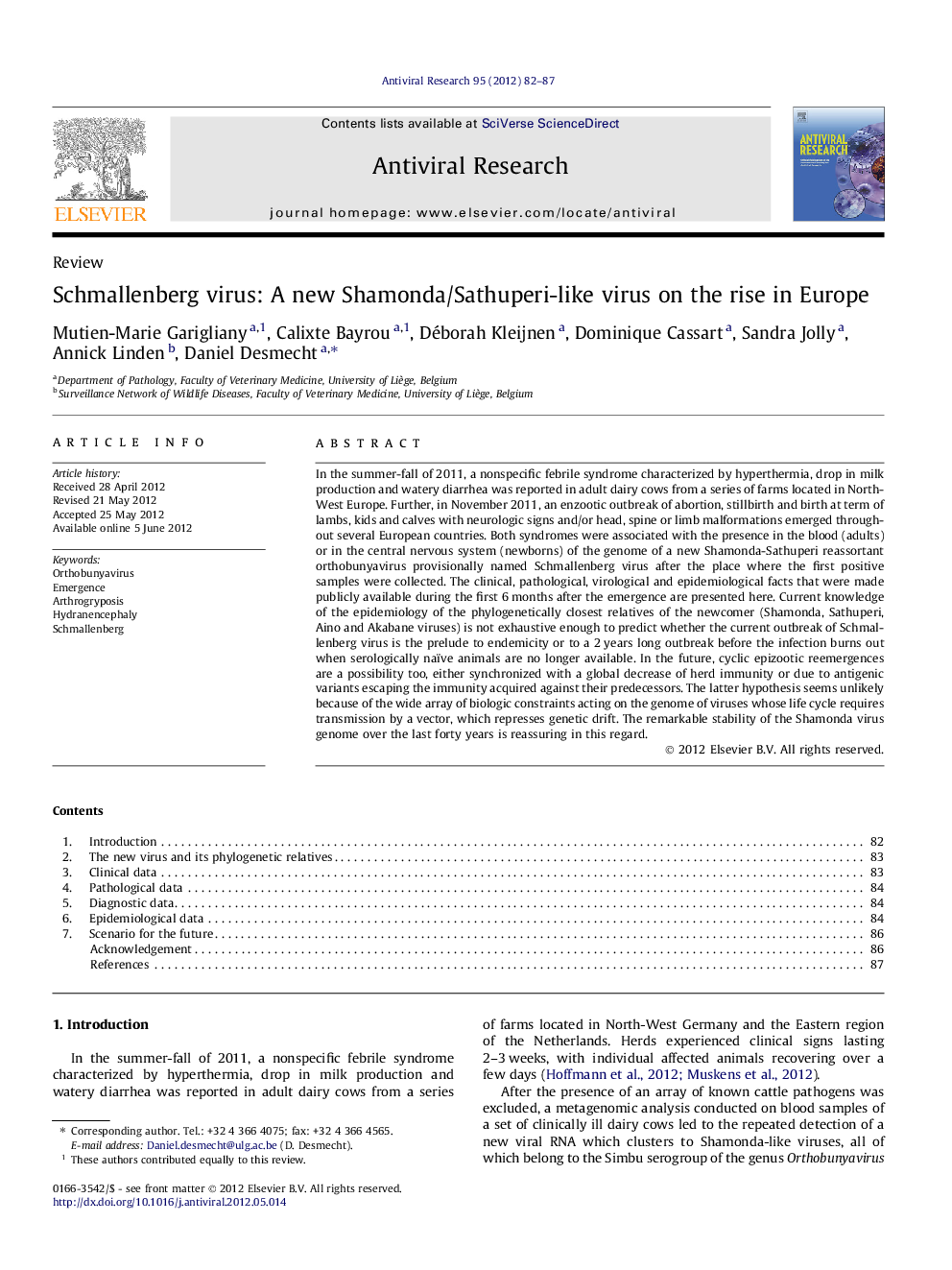| کد مقاله | کد نشریه | سال انتشار | مقاله انگلیسی | نسخه تمام متن |
|---|---|---|---|---|
| 2510089 | 1117950 | 2012 | 6 صفحه PDF | دانلود رایگان |

In the summer-fall of 2011, a nonspecific febrile syndrome characterized by hyperthermia, drop in milk production and watery diarrhea was reported in adult dairy cows from a series of farms located in North-West Europe. Further, in November 2011, an enzootic outbreak of abortion, stillbirth and birth at term of lambs, kids and calves with neurologic signs and/or head, spine or limb malformations emerged throughout several European countries. Both syndromes were associated with the presence in the blood (adults) or in the central nervous system (newborns) of the genome of a new Shamonda-Sathuperi reassortant orthobunyavirus provisionally named Schmallenberg virus after the place where the first positive samples were collected. The clinical, pathological, virological and epidemiological facts that were made publicly available during the first 6 months after the emergence are presented here. Current knowledge of the epidemiology of the phylogenetically closest relatives of the newcomer (Shamonda, Sathuperi, Aino and Akabane viruses) is not exhaustive enough to predict whether the current outbreak of Schmallenberg virus is the prelude to endemicity or to a 2 years long outbreak before the infection burns out when serologically naïve animals are no longer available. In the future, cyclic epizootic reemergences are a possibility too, either synchronized with a global decrease of herd immunity or due to antigenic variants escaping the immunity acquired against their predecessors. The latter hypothesis seems unlikely because of the wide array of biologic constraints acting on the genome of viruses whose life cycle requires transmission by a vector, which represses genetic drift. The remarkable stability of the Shamonda virus genome over the last forty years is reassuring in this regard.
► In the summer-fall of 2011, a nonspecific febrile syndrome emerged in livestock in Europe.
► In the winter, an outbreak of arthrogryposis–porencephaly emerged in newborn kids, lambs and calves.
► Both syndromes are associated with a new bunyavirus, named Schmallenberg virus.
Journal: Antiviral Research - Volume 95, Issue 2, August 2012, Pages 82–87